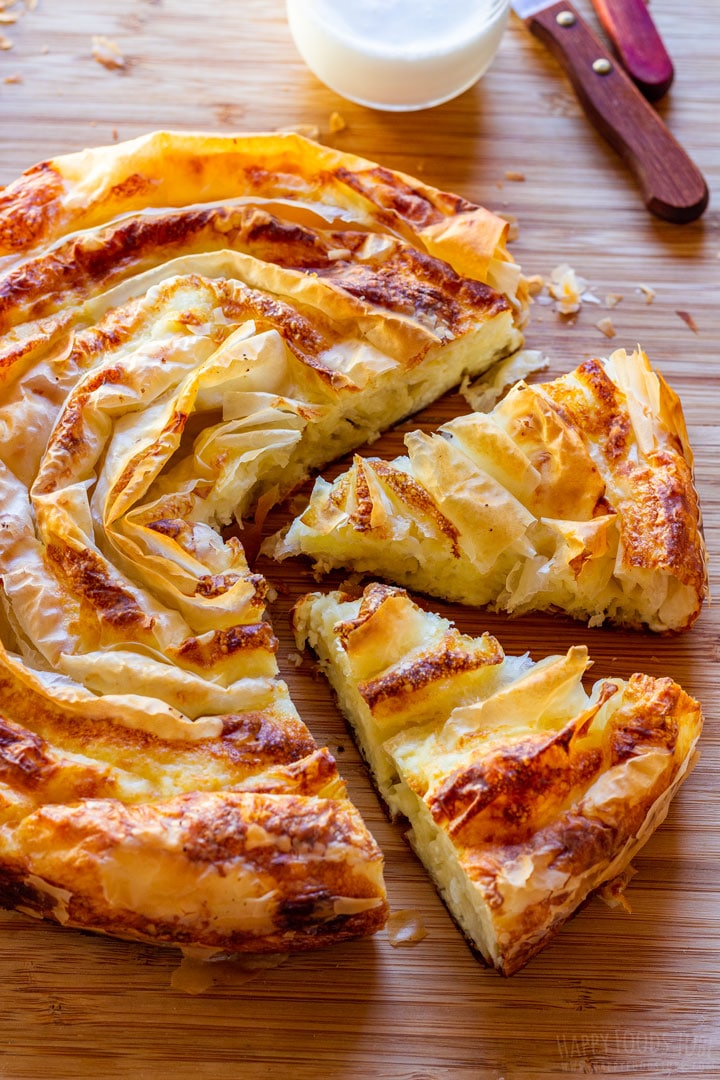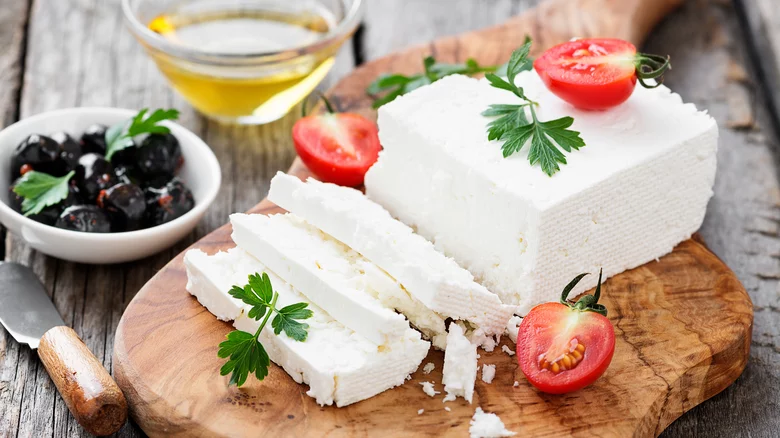
Banitsa
is a traditional pastry dish made in Bulgaria, North Macedonia, Budjak
and Southeastern Serbia (where it may also be referred to as
gibanica), prepared by layering a mixture of whisked eggs, natural
yogurt and pieces of white brined cheese between filo pastry and then
baking it in an oven. Traditionally, lucky charms are put into the
pastry on certain occasions, particularly on New Year's Eve. These
charms may be coins or small symbolic objects (e.g., a small piece of
a dogwood branch with a bud, symbolizing health or longevity). More
recently, people have started writing happy wishes on small pieces of
paper and wrapping them in tin foil. Banitsa is served for breakfast
with plain yogurt, ayran, or boza. It can be eaten hot or cold. Some
varieties include banitsa with spinach "спаначник" (spanachnik) or the
sweet version, banitsa with milk "млечна баница" (mlechna banitsa) or
pumpkin "тиквеник" (tikvenik).

Sirene
is also known as "white brine sirene" (Bulgarian: бяло саламурено
сирене). It is a type of brined cheese originating from Bulgaria also
common in the area of the Balkans. It is made of the milk of goats,
sheep, cows, buffalo or a mixture of these. It is slightly crumbly,
with at least 46–48% of dry matter containing 44–48% of fat. It is
commonly produced in blocks, and has a slightly grainy texture. It is
used as a table cheese, in salads, and in baking.
In 2023, the European Union recognized sirene as a traditional
Bulgarian product, granting it a Protected Designation of Origin
(PDO).

Kebapche
is a Bulgarian dish of grilled minced meat with spices. The meat is
shaped into an elongated cylindrical form, similar to a hot dog.
Typically, a mix of pork and beef is used, although some recipes
involve only pork. The preferred spices are black pepper, cumin and
salt. Kebapche is a grilled food. It is never fried or baked.

Lyutenitsa
is a (sometimes spicy) vegetable relish or chutney in Bulgarian,
Macedonian and Serbian cuisines. The ingredients include peppers,
aubergines, carrots, garlic, vegetable oil, sugar, salt, and tomatoes.
It comes in many varieties: smooth; chunky; with chili peppers or
eggplant; and hot or mild. In recent years, industrial production of
ljutenica and ajvar has flourished. Large-scale production of both
relishes has popularized them outside the Balkans.

Shkembe Chorba
is a common dish in Balkan, Eastern European and Middle Eastern
cuisines. It is widely considered to be a hangover remedy 😉 In
Bulgaria, it is made with whole pork, beef or lamb tripe, boiled for a
few hours, chopped in small pieces, and returned to the broth. The
soup is spiced with ground red paprika which is briefly fried
(запръжка), and often a small quantity of milk is added.
Traditionally, the soup is served with mashed garlic in vinegar and
hot red pepper. There is a variant of the soup with intestines instead
of tripe. The soup was very popular with the working classes until the
late 1980s, and there were many restaurants serving only shkembe
chorba (шкембеджийница, "shkembe-restaurant"). Later they were
replaced by fast food restaurants but the soup is still highly
regarded, and is part of the menu in any cheap to moderately-priced
restaurant.
